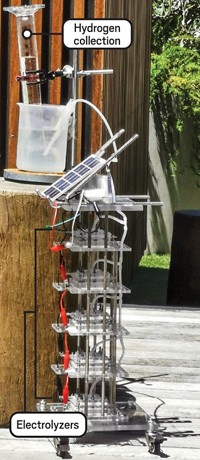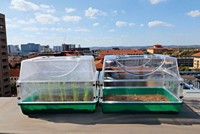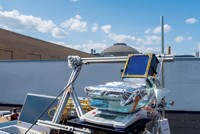Advertisement
Grab your lab coat. Let's get started
Welcome!
Welcome!
Create an account below to get 6 C&EN articles per month, receive newsletters and more - all free.
It seems this is your first time logging in online. Please enter the following information to continue.
As an ACS member you automatically get access to this site. All we need is few more details to create your reading experience.
Not you? Sign in with a different account.
Not you? Sign in with a different account.
ERROR 1
ERROR 1
ERROR 2
ERROR 2
ERROR 2
ERROR 2
ERROR 2
Password and Confirm password must match.
If you have an ACS member number, please enter it here so we can link this account to your membership. (optional)
ERROR 2
ACS values your privacy. By submitting your information, you are gaining access to C&EN and subscribing to our weekly newsletter. We use the information you provide to make your reading experience better, and we will never sell your data to third party members.
Materials
Drawing water from dry air
A MOF is at the heart of a sunlight-powered device that pulls water from air with low humidity
by Bethany Halford
April 17, 2017
| A version of this story appeared in
Volume 95, Issue 16
Finding yourself stranded in the desert without any water could become less of a life-and-death problem, thanks to a new device that can pull potable water from air even in humidity as low as 20% (a condition typical for North Africa). The water harvester, constructed by Evelyn N. Wang’s group at MIT, is powered by only sunlight and has at its heart a metal-organic framework, or MOF, developed by Omar M. Yaghi’s group at the University of California, Berkeley (Science 2017, DOI: 10.1126/science.aam8743). In 2014, Yaghi reported a water-grabbing MOF, known as MOF-801, with the structure [Zr6O4(OH)4(fumarate)6] that could soak up to 25% of its weight in water. He approached Wang about incorporating it in a water-harvesting device. Her group built a prototype with dust-sized crystals of MOF-801 sandwiched between a solar absorber and a condenser plate, which are inside a chamber that’s open to the air. As air flows through the chamber, water attaches to the MOF. Sunlight then heats the MOF, driving the water onto a condenser, where it cools and drips into a collector. Over the course of one day, Wang estimates, a 30-L version of the harvester could collect up to 12 L of water from air, enough to support a single household.





Join the conversation
Contact the reporter
Submit a Letter to the Editor for publication
Engage with us on Twitter